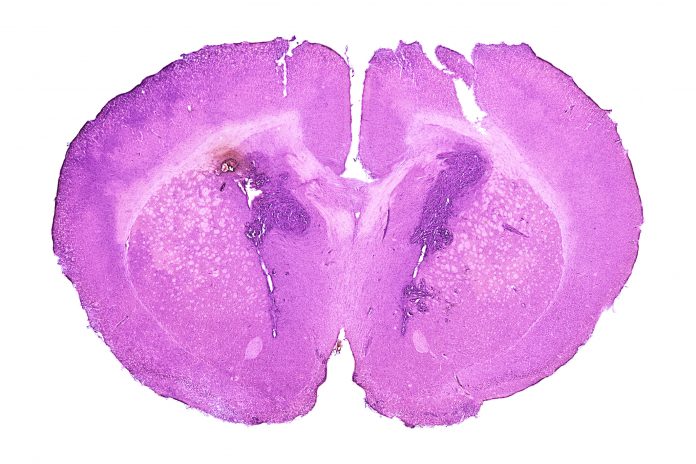
A new algorithm leveraging artificial intelligence machine learning appears to reveal the key drivers of two types of glioblastoma multiforme (GBM) that together represent half of all GBMs.
Even though GBMs are a variable group of subtypes, the treatment for all remains the same. To better provide more targeted treatments, researchers at the University of Miami created the SPHINX algorithm which identifies the major protein kinases at the heart of each GBM tumor. Their work is published in Nature Cancer.
“The primary motivation of our work has been to provide some precision therapeutic approaches to patients with very difficult tumors such as malignant brain tumor,” explains co-senior author Antonio Iavarone, deputy director of the Sylvester Comprehensive Cancer Center at the University of Miami Miller School of Medicine. “To do so we used multiomic platforms that gave us the ability to analyze the multiple molecular landscape features of each tumor that go beyond the standard, which currently is simple sequencing of a few mutations.”
Key to the team’s analysis was a focus on tumor proteins and the effects they have in tumor cells to identify new therapeutic targets. By analyzing previously generated large datasets they created the SPHINX algorithm. “What SPHINX does is identify the primary therapeutic targets for every patient by selecting the protein kinases that are most active in any individual tumor,” says Iavarone.
After analyzing data from the Clinical Proteomic Tumor Analysis Consortium (CPTAC), the team validated two subtypes of patients with GBM—the glycolytic/plurimetabolic subtype which represents about 30% of all GBMs, and the proliferative/progenitor subtype accounting for one-fourth. Before this study, the driving kinases were not known in these GMB subtypes. “That represents more than half of all of the glioblastomas, and these are the most common and the most aggressive,” adds co-senior author Anna Lasorella, MD, professor of biochemistry and molecular biology at Sylvester.
The team previously classified GBMs into four groups based on their molecular features, publishing their findings in a 2021 Nature Cancer paper. In the current analysis they layered not only protein kinase data but phosphoprotein modification data on top of that fundamental work. The phosphoprotein data revealed properties that might activate or deactivate a key protein.
“When we applied the machine learning algorithm it allowed us to extract the most active protein kinases for each tumor type, giving us a clear unbiased classification of each individual tumor and the personalized master protein kinases,” said Lasorella.
The researchers focused on protein kinases for two reasons. The first is protein kinases are major activators of biological processes fundamental for the survival and progression of a tumor. The second is many kinase are targeted by available drugs. Their goal was to target these newly identified targets with therapies that could immediately translate into the clinic.
To test the predictive accuracy of the SPHINX algorithm, the team created patient-derived avatars. These are organoids grown in three-dimensional cultures using tumor cells retrieved from patient tissue from the operating room.
“When we grouped those avatars according to the classification we had developed, we identified two master protein kinases, PKCδ and DNA-PK, ” says Iavarone. And the drugs that target these protein kinases were effective against the tumor cells.
The team’s plan is to initiate clinical trials for these two GBM subtypes, focusing on those two master protein kinases with drugs that are already available. In the meantime, they are further validating the algorithm with organoids in orthotopic mouse models: implanting tumor cells from patients into the brains of mice. Key to this testing strategy is to see if the drugs can penetrate the brain tumor in a therapeutically active concentration and the effects they have.
Related to the SPHINX algorithm, the team also created a second algorithm, or clinical grade classifier, that any clinical center can use to input a minimal set of tumor set and immediately receive information about its subtype.
“It’s available online and can help identify clinical trials for that patient’s GMB subtype,” adds Iavarone. This will help improve the success of a trial and help patients only enroll in a trial that is most likely to benefit them based on their tumor subtype. “This is what our work is about, to enable the most accurate possibilities for precision cancer medicine.”













